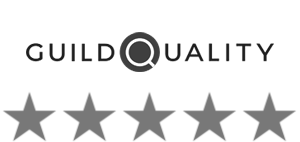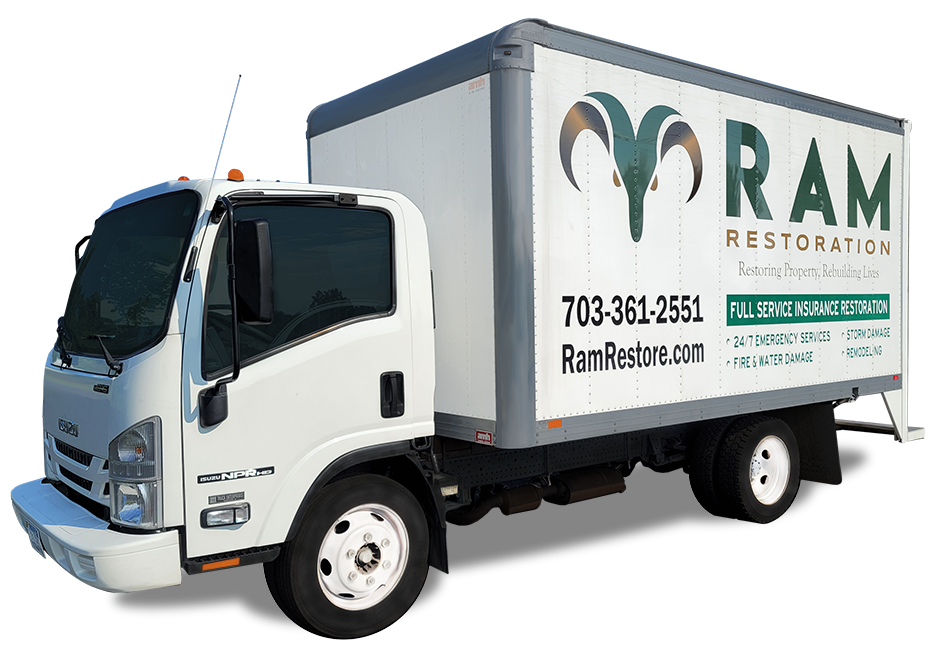Dealing with the aftermath of a flood can be overwhelming, but knowing what to clean up is crucial for restoring your living environment. After a flood, it is important to clean up and dry out your house or business and everything in it to remove hazards from bacteria, viruses, and mold. The following steps can be taken during the cleanup process:
- Remove carpet, upholstered furniture, and stuffed animals that came in contact with contaminated floodwaters.
- Take photographs of all damaged property that needs to be thrown away for insurance purposes.
- Clean curtains, clothing, and bedding with hot soapy water, bleach them if possible, and dry and iron them.
- Flush rugs and furniture with clean water, shampoo and air-dry them.
- Wear protective clothing such as pants, long sleeves, boots, and rubber gloves to protect against germs in the water, mold, and cleaning chemicals.
- Use soap or cleaning products with a disinfectant to kill germs and avoid mixing bleach with other cleaning supplies.
- Open windows and use fans to pull fumes from the work area and control dust by misting down areas and collecting dust with a wet/dry shop vac.
- Wash hands thoroughly with soap and warm water or use an alcohol-based hand sanitizer after cleaning.
- Dry flooded areas thoroughly within 48 hours to prevent mold growth.
- Discard wet materials that cannot be cleaned and replace damaged carpets, mattress, and upholstered furniture.
- Use dehumidifiers and fans to help dry damp areas and run bathroom and kitchen ventilators to keep the air moving in the home.
- Do not pump water into the sewer system but instead pump it out into the yard or storm water drain pipes.
- Consider hiring a professional for extensive mold or flood damage cleanup and consult a medical provider if you have asthma, allergies, or breathing problems.
Key Takeaways:
- Remove contaminated items such as carpet, furniture, and stuffed animals.
- Take photographs of damaged property for insurance purposes.
- Clean curtains, clothing, and bedding with hot soapy water and bleach if possible.
- Use protective clothing and cleaning products with disinfectants.
- Dry flooded areas thoroughly within 48 hours to prevent mold growth.
Essential Steps for Effective Flood Cleanup
Proper flood cleanup is essential for ensuring a safer and cleaner living environment. Follow these essential steps to effectively handle the aftermath of a flood:
- Remove carpet, upholstered furniture, and stuffed animals that came in contact with contaminated floodwaters.
- Take photographs of all damaged property that needs to be thrown away for insurance purposes.
- Clean curtains, clothing, and bedding with hot soapy water, bleach them if possible, and dry and iron them.
- Flush rugs and furniture with clean water, shampoo and air-dry them.
- Wear protective clothing such as pants, long sleeves, boots, and rubber gloves to protect against germs in the water, mold, and cleaning chemicals.
- Use soap or cleaning products with a disinfectant to kill germs and avoid mixing bleach with other cleaning supplies.
- Open windows and use fans to pull fumes from the work area and control dust by misting down areas and collecting dust with a wet/dry shop vac.
- Wash hands thoroughly with soap and warm water or use an alcohol-based hand sanitizer after cleaning.
- Dry flooded areas thoroughly within 48 hours to prevent mold growth.
- Discard wet materials that cannot be cleaned and replace damaged carpets, mattress, and upholstered furniture.
- Use dehumidifiers and fans to help dry damp areas and run bathroom and kitchen ventilators to keep the air moving in the home.
- Do not pump water into the sewer system but instead pump it out into the yard or storm water drain pipes.
- Consider hiring a professional for extensive mold or flood damage cleanup and consult a medical provider if you have asthma, allergies, or breathing problems.
Additionally, the floor, walls, basement, and safety procedures should be addressed during the cleanup process. It is important to remove mud and silt, clean the floors with a shovel and hose, open flooded walls to prevent mold growth, clean the basement, and ensure safety measures such as wearing protective gear and not reentering the property until it is declared safe.
Overall, the cleanup process after a flood involves removing contaminated materials, cleaning and disinfecting surfaces, drying out the area, and taking necessary precautions for safety.
| Steps for Effective Flood Cleanup | Things to Remember |
|---|---|
| Remove contaminated items | Wear protective clothing |
| Clean and disinfect surfaces | Use soap or cleaning products with disinfectant |
| Dry flooded areas thoroughly | Utilize dehumidifiers and fans |
| Discard wet and damaged materials | Replace carpets, mattress, and upholstered furniture |
| Consult professionals for mold or flood damage cleanup | Consider medical consultation for health concerns |
Conclusion
Taking prompt action and following the necessary steps for flood cleanup can help restore your living environment and prevent potential health hazards. After a flood, it is important to clean up and dry out your house or business and everything in it to remove hazards from bacteria, viruses, and mold. The cleanup process involves several crucial steps that should be undertaken to ensure a thorough restoration.
First and foremost, it is essential to remove carpet, upholstered furniture, and stuffed animals that have come into contact with contaminated floodwaters. Additionally, documenting the damage by taking photographs of all affected property is crucial for insurance purposes.
Next, curtains, clothing, and bedding should be cleaned with hot soapy water and, if possible, bleached. Properly flushing rugs and furniture with clean water, shampooing, and air-drying them will help eliminate any remaining contaminants. Throughout the cleanup process, it is important to wear protective clothing, such as pants, long sleeves, boots, and rubber gloves, to safeguard against germs, mold, and cleaning chemicals.
Using soap or cleaning products with disinfectants is necessary to kill germs, and it is vital to avoid mixing bleach with other cleaning supplies. Adequate ventilation is also crucial to control dust and fumes; opening windows and using fans can assist in removing fumes from the work area. Additionally, it is important to wash hands thoroughly or use hand sanitizer after cleaning.
Ensuring that flooded areas are thoroughly dried within 48 hours is crucial to prevent mold growth. Wet materials that cannot be cleaned should be promptly discarded, and any damaged carpets, mattresses, and upholstered furniture should be replaced. Dehumidifiers and fans can be used to dry damp areas, and running bathroom and kitchen ventilators helps keep the air moving in the home.
During the cleanup process, it is important to pump water out into the yard or storm water drain pipes rather than the sewer system. Professional assistance may be necessary for extensive mold or flood damage cleanup, and individuals with asthma, allergies, or breathing problems should consult a medical provider.
Addressing additional areas such as floors, walls, basements, and safety procedures is also crucial. Removing mud and silt, cleaning floors with a shovel and hose, and opening flooded walls are important steps to prevent mold growth. Cleaning the basement and adhering to safety measures, such as wearing protective gear and not reentering the property until it is declared safe, are also essential.
By following these steps and taking necessary precautions, you can effectively clean up after a flood, restore your living environment, and mitigate potential health risks.
FAQ
What items should be removed after a flood?
Items that came in contact with contaminated floodwaters, such as carpet, upholstered furniture, and stuffed animals, should be removed.
Should I document damaged property for insurance purposes?
Yes, it is recommended to take photographs of all damaged property that needs to be thrown away for insurance purposes.
How do I clean curtains, clothing, and bedding after a flood?
Clean curtains, clothing, and bedding with hot soapy water, bleach them if possible, and dry and iron them.
How do I clean rugs and furniture after a flood?
Flush rugs and furniture with clean water, shampoo them, and air-dry them.
What protective clothing should I wear during flood cleanup?
Wear pants, long sleeves, boots, and rubber gloves to protect against germs in the water, mold, and cleaning chemicals.
What cleaning products should I use to kill germs?
Use soap or cleaning products with a disinfectant to kill germs, and avoid mixing bleach with other cleaning supplies.
How can I control dust and fumes during cleanup?
Open windows and use fans to pull fumes from the work area, control dust by misting down areas, and collect dust with a wet/dry shop vac.
When should I dry flooded areas to prevent mold growth?
Dry flooded areas thoroughly within 48 hours to prevent mold growth.
What should I do with wet materials that cannot be cleaned?
Discard wet materials that cannot be cleaned, and replace damaged carpets, mattresses, and upholstered furniture.
How can I help dry damp areas after a flood?
Use dehumidifiers and fans to help dry damp areas, and run bathroom and kitchen ventilators to keep the air moving in the home.
Can I pump floodwater into the sewer system?
No, it is advised not to pump water into the sewer system. Instead, pump it out into the yard or storm water drain pipes.
Should I hire a professional for extensive mold or flood damage cleanup?
Consider hiring a professional for extensive mold or flood damage cleanup. Consult a medical provider if you have asthma, allergies, or breathing problems.







